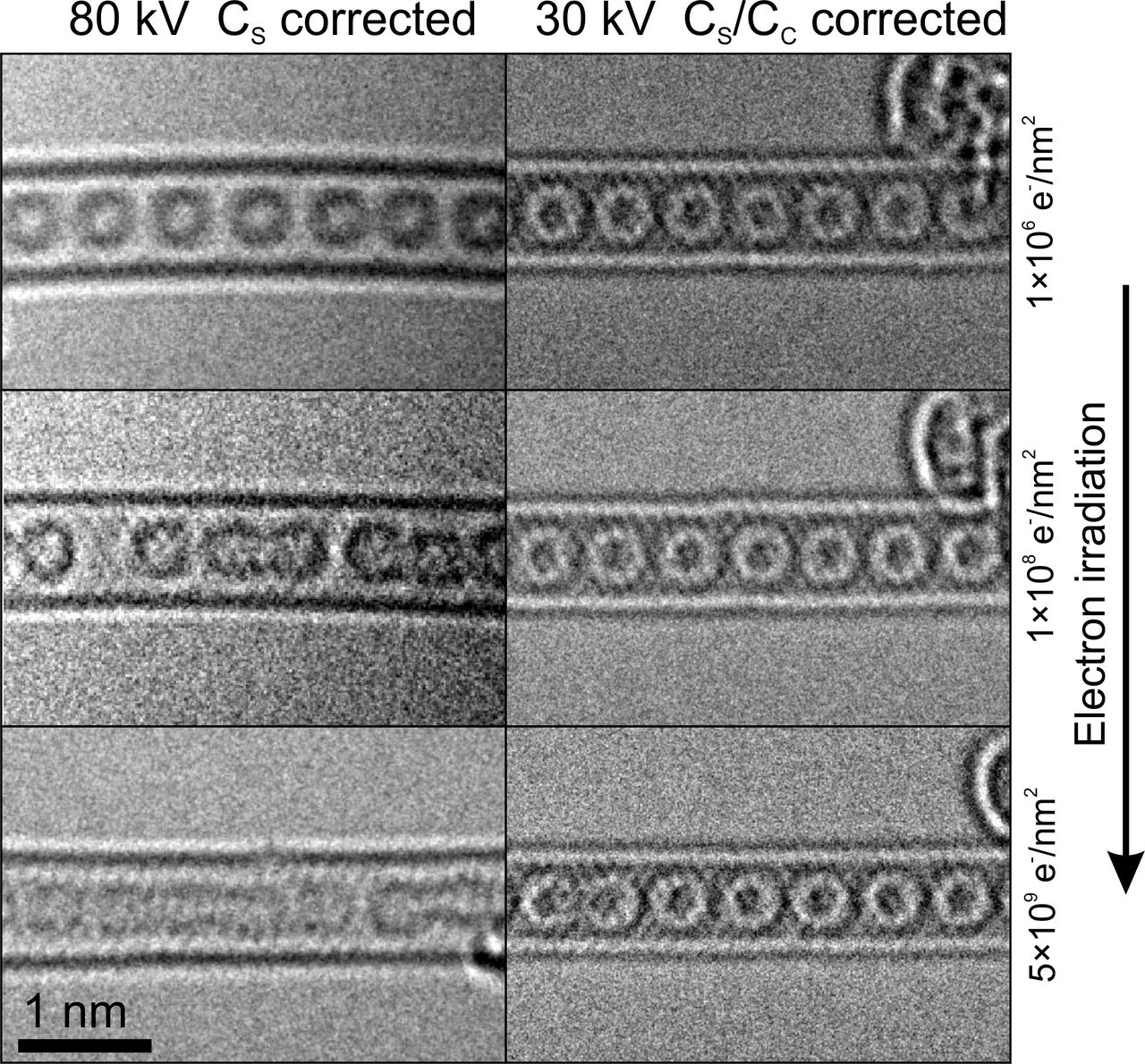Carbon nanotubes (CNTs)
Carbon nanotubes (CNTs) are allotropes of carbon with a cylindrical nanostructure. These molecules have unusual properties, which are utilized nanotechnology, electronics, optics, catalysis, and many other fields. CNTs have excellent material properties such a large tensile strength, stiffness and thermal conductivity. The electronic properties of CNTs range from metallic-states with very high conductivity to semiconducting states depending on the crystalline structure of the nanotubes. From the point of chemistry, they are very inert to strong acids and bases. Due to their small inner diameter of less than a nanometer, small objects such as nanocrystals, molecules or even foreign atoms can be placed inside the nanotubes. We use them as test-tubes or sample-support for studying such small objects by TEM. The samples are filled into the tubes usually by chemisorption out of a gas or liquid phase.
Depending of the electron energy and the resulting knock-on damage we are able to investigate the objects in their pristine state and trigger chemical reactions resulting in structural changes. As the tubes are very good heat and electric conductors, charging and heating by electron irradiation are strongly suppressed.
Prof. A. Khlobystov, Prof. E. Besley (University of Nottingham)
DFG and MWK Baden-Württemberg in the frame of the SALVE project

